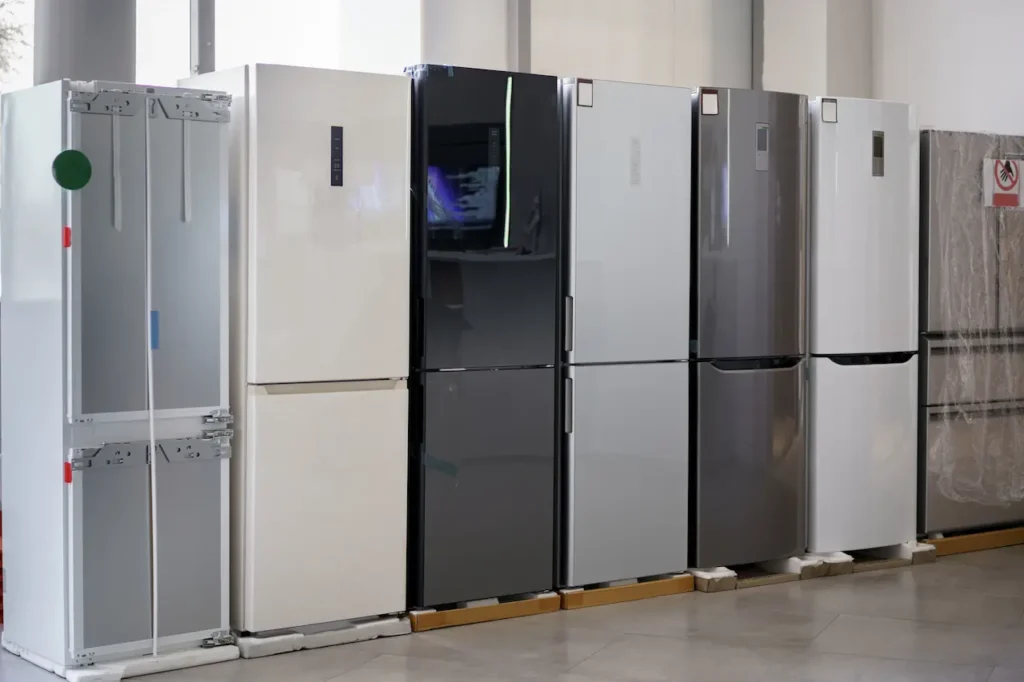Things To Consider When Buying a Fridge
Things To Consider When Buying a Fridge: A Comprehensive Guide
The decision you make when choosing a fridge will have a lasting impact on your kitchen. There are many factors to consider when making a final decision. It’s easy for you to become overwhelmed by the many available options. This guide will help you to make an informed choice and choose the best fridge for your home.
1. Measure
Measure your kitchen area carefully before you decide on the fridge you want. Check where you will place the fridge. Make sure there is enough space for the fridge door to open, without it hitting a wall or island. To ensure that your fridge works efficiently, leave about an inch on all sides to allow for ventilation.
Don’t overlook the delivery route! It is common to assume that the fridge will fit in the doorway, or through narrow hallways. Try moving the cardboard from your fridge around your house to check if it fits. Although it may seem over the top, it is better to be safe rather than sorry.

2. Select Your Style
Each style offers unique advantages. Your preferences and the way you intend to use your fridge will determine which style is best for you.
- Top-Freezer This is a classic design with the freezer section on top and the refrigerator below. Top freezers tend to be the most energy-efficient and affordable option, so they’re a good choice if you are on a tight budget.
- Bottom freezer: A more modern alternative, with the refrigerator section at the top and the freezer at the bottom. These models are more affordable and offer easier access to fresh foods.
- Side by Side: These units have the freezer and fridge next to each other, making it easy to access both frozen and fresh foods. Some models have limited space to store larger frozen items such as pizzas and baking sheets.
- French Door: French-door refrigerators have two doors on top and a drawer at the bottom. They are sleek and stylish. These models are more expensive, but they offer a more spacious and organised interior.
- Column – A stylish, customisable refrigerator type. These columns can be integrated into your cabinetry to create a seamless appearance. They are ideal for those who want flexibility and versatility in their storage, particularly for wine.
- Counter Depth: For a more seamless look, choose counter depth models. They are smaller than standard models and fit perfectly into your kitchen counters. You may need to sacrifice storage space for a sleeker look.
3. Decide Your Budget
Before you begin shopping, it’s best to establish a budget. Refrigerators are available in many different price ranges. A quality, basic top-freezer fridge can be purchased for under $600. More advanced models, such as French-door refrigerators, start at around $1,000.
While high-end models might have more features and be more expensive to operate in the long term, this is especially true if they use more energy. Be sure to weigh your initial cost against the long-term savings.
4. Estimate Storage Needs
Consider your family’s eating patterns and how much space you require when choosing a fridge. Do you and your family consume fresh food or store frozen meals more? How much space your fridge will need depends on the size of your kitchen, and how much food you keep in it. Do not forget about the freezer space!
You can customise the interior of some models to fit large items such as sheet cakes and holiday roasts. Space can be taken up by features such as in-door ice machines and other conveniences. Consider how much space you need to store food, versus the features.
5. Choose the right Finish
The fridge is one of the most visible appliances in your kitchen. Therefore, it is important to choose a finish that complements the rest of your décor.
- Stainless Steel Stainless steel has a sleek, professional appearance and is timeless. Many stainless steel refrigerators are smudge-proof, making them easier for you to maintain.
- Black Stainless Steel: This is a more modern take on the classic. Black stainless steel resists fingerprints and gives your kitchen a sophisticated, bold look.
- Black or White If you are on a tight budget or want a classic appliance then black or white is a good choice. These appliances are usually less expensive than stainless steel, and they can be matched to other appliances in the kitchen.
- Other Colours: Although less common, vibrant colours like red or turquoise can add an interesting and fun touch to your home. Smeg, a design-forward brand, offers colourful refrigerators that are statement pieces.
6. Special Features
Today’s fridges come with many special features, which go beyond the basic functions of cooling and freezing. Consider these popular choices:
- Flex Drawers: These temperature-controlled drawers allow you to set different temperatures for different items, such as keeping wine cool or fresh meat at a specific temperature.
- Dual evaporators This feature separates cooling systems between the refrigerator and freezer to maintain better air quality. It also prevents odours from mixing.
- Air filters: Modern fridges are equipped with air filters designed to reduce the impact of ethylene released by fruits.
- Smart features Some refrigerators have smart technology that connects with your home network. With a few simple taps, you can remotely control your refrigerator, check the inventory or order groceries. Many brands, including LG, Samsung and Bosch, offer smart features that make life easier.
7. Consider the Feel and Touch
Your fridge will likely be the appliance you use most often in your home. It’s therefore important to think about how the fridge feels when you use it. For a sleeker look and more comfortable grip, you should consider features such as recessed handles. Consider a fridge with a smudge-proof finish, especially if it’s stainless steel or black. This will reduce the maintenance.
Even if you are shopping online, it is worth visiting a store to see the product in person and to make sure that the interior, handles and doors meet your expectations.

8. Check out the Reviews
Check user reviews and ratings before making a decision. User reviews are a great way to identify problems with a fridge or laud specific models for performance, reliability or design. Also, personal recommendations from family or friends can be very helpful.
9. Delivery Considerations
After you have made your choice, take into consideration the delivery and installation processes. Ask about any additional installation fees. Some retailers offer free delivery. Before signing the delivery receipt, make sure to inspect your fridge for any damages. After the fact, it can be difficult to fix delivery issues like dents and scratches.
Be prepared for possible delays. Supply chain disruptions can still impact appliance availability. Some models may take weeks or even months to arrive. Check availability if you are in a hurry to buy a refrigerator.
10. How to dispose of an old fridge
Don’t forget about disposing of your old refrigerator. Some retailers will remove your old unit at the time of delivery, but there may be a fee for this service. Ask about the removal procedure in advance to avoid surprises on the day of delivery.
11. What will it be used for?
You need to also decide what your new refrigerator will be used for. We all know about the home but will it be used for your office which will be not used as much as home or will it be used for a restaurant or busy café? Many fridges won’t be able to keep up with a restaurant or café needs. You may need to look into commercial fridges or even industrial if you have a large restaurant! Always make sure to do your homework.
What to Consider
Refrigerators have evolved along with other machines and technologies. Before, you may have only needed an appliance to keep your food cold and fresh. Modern fridges are equipped with a variety of functions that take them to a new level. You can easily feel overwhelmed by all the features, especially if you are presented with them by a salesperson.

1. Compressor
The compressor is at the heart of a refrigerator. The compressor distributes refrigerant throughout the system, increases the pressure in the warm circuit, and heats up the refrigerant. This is similar to pumping a bicycle tube with air. You can feel the heat in the pump increase when you compress the air.
Smaller units often come with standard compressors. Larger units are equipped with inverter compressors.
A. Compressors General
These compressors start at high speeds and keep them up throughout the operation. Air conditioners will continue to work even if there is no cooling loss. This type of compressor is more energy-intensive.
B. Inverter Compressors
Inverter compressors are by their nature adaptive. The speed of the compressors is determined by how much cooling a machine needs. The machines start slowly and increase the speed as required. Inverter compressors have a higher energy efficiency, but they are also more expensive.
2. Energy Efficiency
It is important to take this into consideration. If you intend to use the appliance for a long time, your monthly electricity bill shouldn’t go up.
The large number in the middle is the Energy Efficiency Factor. This shows how efficiently the refrigerator uses its electricity in order to cool its storage capacity. The more energy-efficient the fridge, the higher its EEF value. This number can be used to compare similar fridge models in a store.
This yellow guide label also includes the storage capacity, the minimum energy performance standard and the method for estimating running costs.
3. Manufacturer’s warranty
Most refrigerators come with a limited warranty. Even if the extended warranty is not free, it’s worth choosing a brand with an extended warranty. Do not take this for granted. Ask your dealer. Consider the availability of parts for your chosen brand. Components for foreign brands may be difficult to obtain and expensive.


